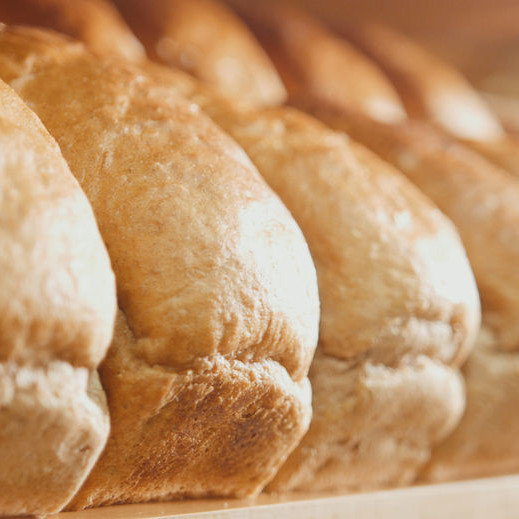
Bread Baking Test
What is a Bread Baking Test?
A bread baking test is a controlled, small scale pan bread production run that is carried out at lab or pilot plant level by R&D and/or QC departments of flour mills and bakeries.
The purpose of a bread baking test is to evaluate the quality and performance of hard wheat flours and various ingredients that make up the formulation of white pan bread.
How does it work?
Bread baking tests allow for screening and selecting flours, modifying formulations and processing conditions. The results obtained are useful only if strict procedures are followed and careful control over process variations (operator-, equipment-, environment- and materials-related) is exercised to make the test reliable, reproducible and repeatable.
Bread baking tests can be done by using different dough systems and official methods:
- AACCI Method 10-10.03 (Straight-Dough Bread-Making Method)
- AACCI Method 10-11.01 (Baking Quality of Bread Flour – Sponge and Dough Method)
Application
For a bread baking test using the straight dough method, the following equipment is needed:1
- Micromixer or small capacity pin-type mixer (McDuffee-type bowl); recommended speed of 100–125 rpm.
- Cabinet or proof box for bulk dough fermentation and final proofing, capable of maintaining constant temperature of 86 ± 2°F (30 ± 1°C) and 85% RH.
- Roller (sheeter) for punching and sheeting for 150–200 g dough.
- Moulder for 150–200 g dough.
- Tinplate, unglazed pans for 150–200 g doughs, having proportions of commercial pans for 1-pound loaves.
- Reel or rotary oven (preferably gas-fired) capable of maintaining temperature of 400–450°F (210–232°C).
- 750–800 mL fermentation bowls (stainless steel or plastic) with capacities of for doughs from 10 or 100 g flour.
- Properly calibrated thermometer with a measuring range of 32–302°F (0–150°C).
- Timers for controlling process times and schedules.
- Loaf volumeter (seed-displacement type) or laser volumeter.
- Digital balance with an accuracy of at least 0.01 g.
- Scoops, spatulas, pipettes, burets, graduated cylinders, flasks, beakers.
Bread formulation (using 100 grams of flour)1
| Ingredient | Baker’s % (based on flour weight) |
| Bread flour* | 100.0 |
| Water | 59.0–65.0** |
| Fresh yeast (compressed) | 5.3*** |
| Sugar (refined granulated sucrose) | 6.0 |
| All-purpose shortening | 3.0 |
| Salt, NaCl (chemically pure) | 1.5 |
| Diastatic malt (malted barley flour) | 0.2–0.3**** |
| Ascorbic acid (optional) | 40–90 ppm |
| Potassium bromate (optional) | 10–20 ppm |
| Nonfat dry milk, emulsifiers, reducing agents, enzymes (optional) | Levels vary according to test purposes |
*14% moisture content; flour from hard wheat (HRS, HRW, HW). Correction of the flour weight must be performed if using flours with higher or lower moisture contents (refer to AACCI Method 82-24.01 for proper multiplication factors).
**Hydration levels depend on flour strength and protein content. Mixograph or farinograph can be used to determine optimum water absorption levels.
***Active dry yeast can also be used (yeast conversion and reconstitution must be performed).
****Levels vary according to the amount of damaged starch and falling number value of flour.
Processing
- Mixing
- Dividing/scaling (for multiple dough batch) and rounding (optional)
- Bulk fermentation
- Sheeting and moulding
- Panning
- Final proofing
- Baking
- Cooling
- Bread evaluation (scoring)
Processing specifications1
- Mixing
- Place dry ingredients in mixing bowl first, then add liquids. Avoid placing salt on top or next to yeast
- Mix to full gluten development. Record mixing time
- Time: depends on flour strength, quantity of functional polymers and mixing speed. Check final point by performing a gluten film test
- Final dough temperature: temperature of water should be adjusted to give dough out of mixer at 84 ± 1°F (29 ± 0.5°C)
- Bulk fermentation
- Time: fermentation time may vary from 60 to 180 min (90 min is recommended)
- Temperature: 82°F (28°C)
- RH: 85%
- Punching (degassing): punching or lamination of dough at 58, 86 and 100% of fermentation time
- Sheeting and moulding
- Sheeting and moulding can be performed by using a custom-made moulder or it can be carried out manually
- Panning
- Place the moulded dough pieces on baking pans previously greased
- Final proofing
- Time: Proofing time may vary from 24 to 60 min (33 ± 2 min is recommended for optimum height)
- Temperature: 82°F (28°C)
- RH: 85%
- Baking
- Time: 20–24 min (bake to an internal temperature of 204°F or 95°C
- Temperature: 419°F (215°C)
Application
- Doughs inoculated with yeast at a 5.3% level is expected to have a fermentation time of 90 min with punchings being done at minutes 52, 77, and 90, and a final proofing time of 33 ± 2 min. Fermentation and proofing times depend on yeast level and desired loaf volume, and are influenced by yeast activity, hydration, pH and dough temperature.
- Several pieces of dough can be produced at the same time to check process variations and obtain statistical data if needed (if a multiple dough batch is mixed, scale dough pieces to desired weight or according to pan size).
- Oxidizing and dough conditioners must be reagent grade and may be added in dry form. Solutions of these ingredients must be prepared very carefully to meet final concentration. Water for hydration must be adjusted (cut) when adding ingredients in solutions.
References
- AACC International. Approved Methods of Analysis, 11th Ed. Method 10-10.03. Cereals & Grains Association, St. Paul, MN, U.S.A.

